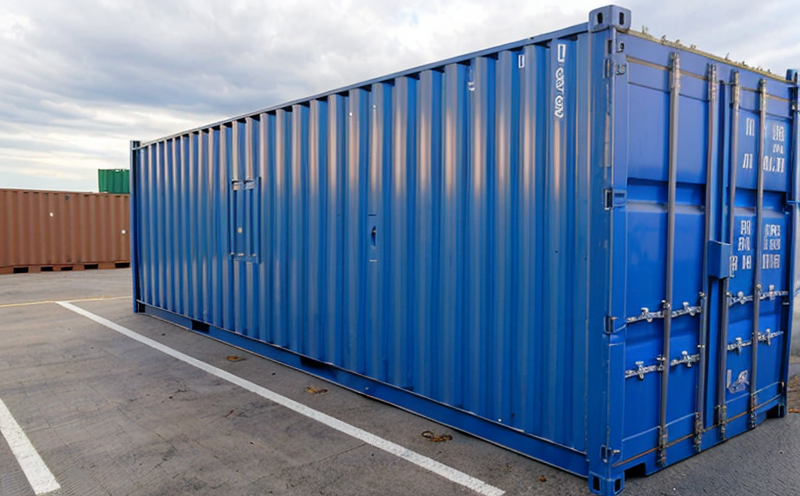UL 94 Flammability Classification Testing of Plastic Storage Plastics
The UL 94 flammability classification test is a critical procedure for assessing the fire safety of plastic materials used in storage containers. This test evaluates how well the plastic material resists ignition and flame spread under controlled conditions, which are essential for ensuring safe use in various environments.
Plastic storage containers are widely used across multiple sectors such as food packaging, pharmaceuticals, electronics, automotive, and household goods due to their durability, light weight, and cost-effectiveness. However, the flammability of these materials can pose significant safety risks if not properly managed. The UL 94 standard is one of the most recognized in the world for assessing plastic flammability.
The test involves subjecting a small specimen to a specified flame source until it ignites, then measuring various parameters such as burn time, flaming time, and after-flame time. These measurements help determine which UL 94 classification (V-0, V-1, or V-2) the plastic belongs to. Higher classifications indicate better resistance to fire.
The importance of this test cannot be overstated in industries where storage containers come into contact with hazardous materials or are exposed to high temperatures and potential ignition sources. Compliance with UL 94 is often a regulatory requirement, ensuring that products meet the necessary safety standards for use in consumer goods, industrial applications, and commercial settings.
Our laboratory uses state-of-the-art equipment and follows strict protocols to ensure accurate and reliable testing results. The test setup includes a standard combustion chamber, flame applicator, and measurement devices calibrated according to international standards such as ASTM E2040 and ISO 1716. Specimens are prepared carefully following industry best practices to ensure consistent and repeatable test outcomes.
The UL 94 test results play a crucial role in product design and development, helping manufacturers make informed decisions about material selection and formulation adjustments. By providing clear evidence of a plastic's flammability performance, this testing ensures that products are safe for use while also meeting legal requirements.
| Classification | Flame Spread Index | Burn Time (s) |
|---|---|---|
| V-0 | Lowest flame spread | <1.5 s |
| V-1 | Moderate flame spread | ≤4.0 s |
| V-2 | Higher flame spread | <30 s |
Scope and Methodology
The UL 94 flammability test is conducted on small specimens of the plastic material to be evaluated. The procedure begins with the preparation of the specimen, which must meet specific dimensions as defined in the UL 94 standard. The specimen is then placed into a combustion chamber where it is exposed to a controlled flame source.
| Parameter | Value |
|---|---|
| Chamber Temperature | 85 ± 2°C |
| Flame Duration | 10 seconds |
| Flame Height | 13 mm |
The test is conducted under strict temperature and time controls to ensure consistent results. After exposure to the flame, the specimen is inspected for flaming time, after-flame time, and burn time. These parameters are measured accurately using high-precision instruments.
Based on these measurements and other relevant criteria, the plastic material is assigned a classification (V-0, V-1, or V-2). This classification indicates the likelihood of the material catching fire and its ability to self-extinguish. Compliance with UL 94 standards ensures that storage containers are safe for use in a wide range of environments.
Benefits
- Ensures compliance with international safety standards such as UL, ASTM, and ISO.
- Reduces the risk of fire hazards in storage environments.
- Promotes safe handling and use of plastic storage containers.
- Aids in material selection by identifying suitable plastics for specific applications.
- Supports product development by providing data on flammability performance.
- Facilitates regulatory compliance, reducing the risk of legal penalties.
The UL 94 flame test is a vital step in ensuring that plastic storage containers are safe and reliable. By conducting this test, manufacturers can gain valuable insights into their material's performance and make necessary adjustments to improve safety and meet regulatory requirements.
Why Choose This Test
- It is one of the most widely recognized standards for plastic flammability testing globally.
- The test results are accepted by regulatory bodies and industry stakeholders worldwide.
- Provides clear, quantitative data on a material's flammability performance.
- Helps manufacturers meet safety requirements and avoid recalls or product bans.
- Supports the development of safer products that can be trusted in various environments.
Selecting this test ensures that your plastic storage containers are safe, reliable, and compliant with international standards. This is especially important for industries where fire safety is a critical concern.





